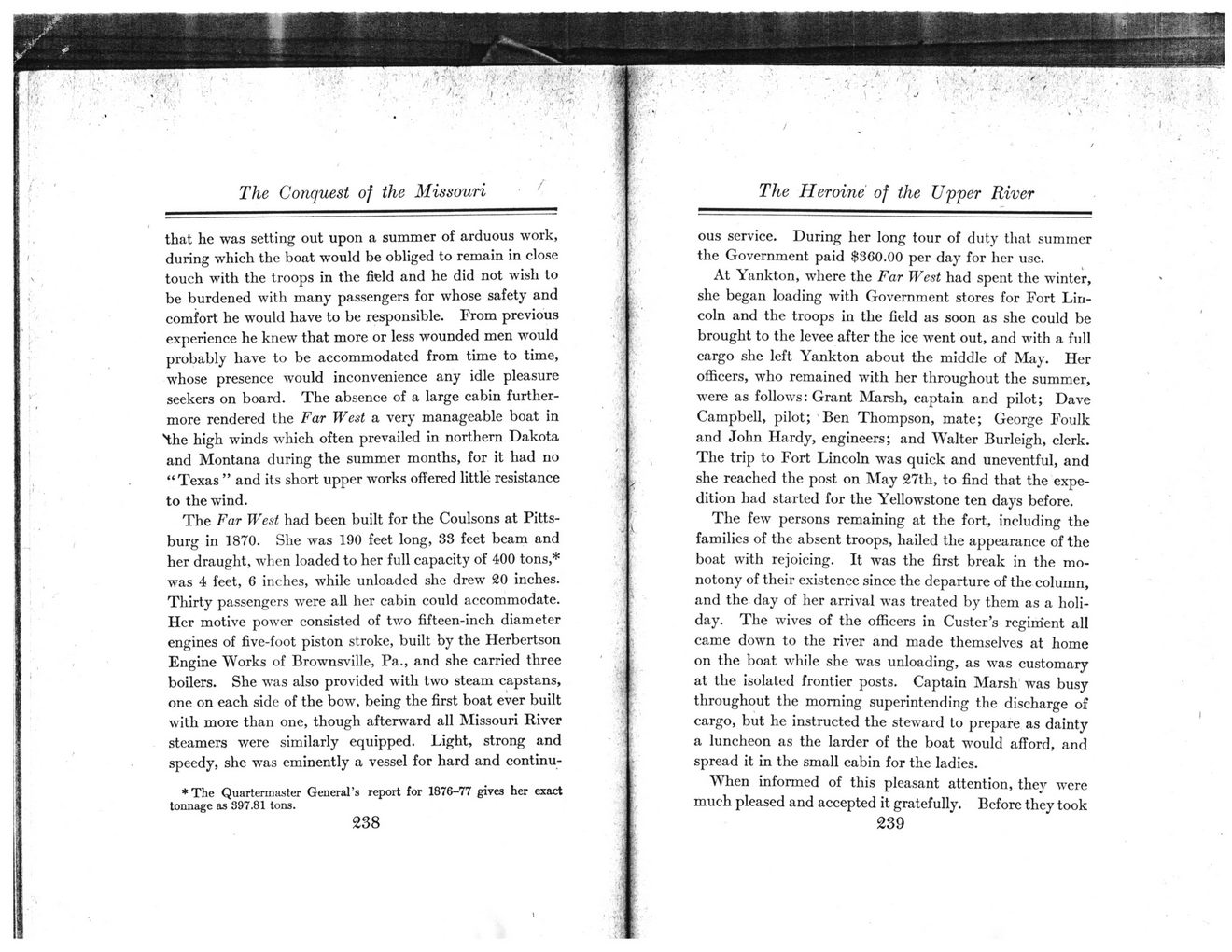This text was obtained via automated optical character recognition.
It has not been edited and may therefore contain several errors.
The Conquest of the Missouri that he was setting out upon a summer of arduous work, during which the boat would be obliged to remain in close touch with the troops in the field and he did not wish to be burdened with many passengers for whose safety and comfort he would have to be responsible. From previous experience he knew that more or less wounded men would probably have to be accommodated from time to time, whose presence would inconvenience any idle pleasure seekers on board. The absence of a large cabin furthermore rendered the Far West a very manageable boat in Xhe high winds which often prevailed in northern Dakota and Montana during the summer months, for it had no ?Texas ? and its short upper works offered little resistance to the wind. The Far West had been built for the Coulsons at Pittsburg in 1870. She was 190 feet long, 33 feet beam and her draught, when loaded to her full capacity of 400 tons,* was 4 feet, 6 inches, while unloaded she drew 20 inches. Thirty passengers were all her cabin could accommodate. Her motive power consisted of two fifteen-inch diameter engines of five-foot piston stroke, built by the Herbertson Engine Works of Brownsville, Pa., and she carried three boilers. She was also provided with two steam capstans, one on each side of the bow, being the first boat ever built with more than one, though afterward all Missouri River steamers were similarly equipped. Light, strong and speedy, she was eminently a vessel for hard and continu- * The Quartermaster General?s report for 1876?77 gives her exact tonnage as 397.81 tons. 238 The Heroine of the Upper River ous service. During her long tour of duty that summer the Government paid $360.00 per day for her use. At Yankton, where the Far West had spent the winter, she began loading with Government stores for Fort Lincoln and the troops in the field as soon as she could be brought to the levee after the ice went out, and with a full cargo she left Yankton about the middle of May. Her officers, who remained with her throughout the summer, were as follows: Grant Marsh, captain and pilot; Dave Campbell, pilot; Ben Thompson, mate; George Foulk and John Hardy, engineers; and Walter Burleigh, clerk. The trip to Fort Lincoln was quick and uneventful, and she reached the post on May 27th, to find that the expedition had started for the Yellowstone ten days before. The few persons remaining at the fort, including the families of the absent troops, hailed the appearance of the boat with rejoicing. It was the first break in the monotony of their existence since the departure of the column, and the day of her arrival was treated by them as a holiday. The wives of the officers in Custer?s regiment all came down to the river and made themselves at home on the boat while she was unloading, as was customary at the isolated frontier posts. Captain Marsh was busy throughout the morning superintending the discharge of cargo, but he instructed the steward to prepare as dainty a luncheon as the larder of the boat would afford, and spread it in the small cabin for the ladies. When informed of this pleasant attention, they were much pleased and accepted it gratefully. Before they took 239

Williams, Dr John W Conquest-of-the-Missouri-04